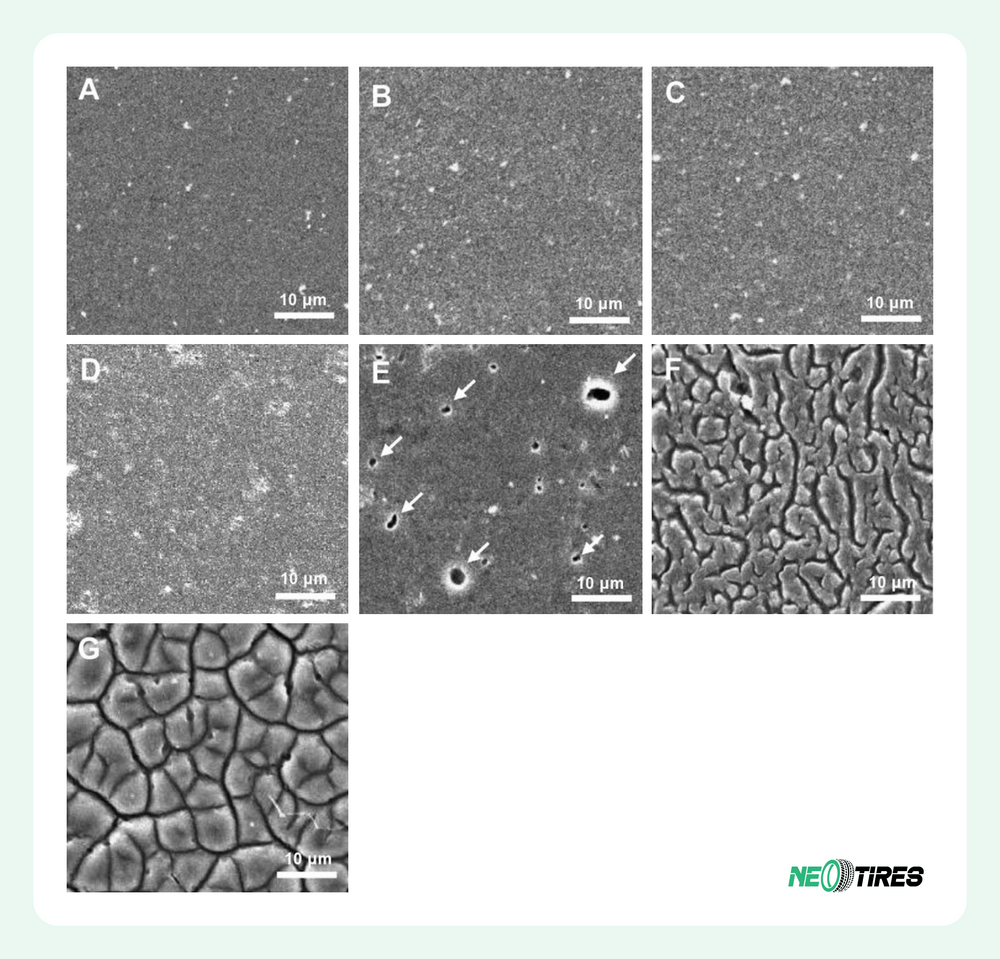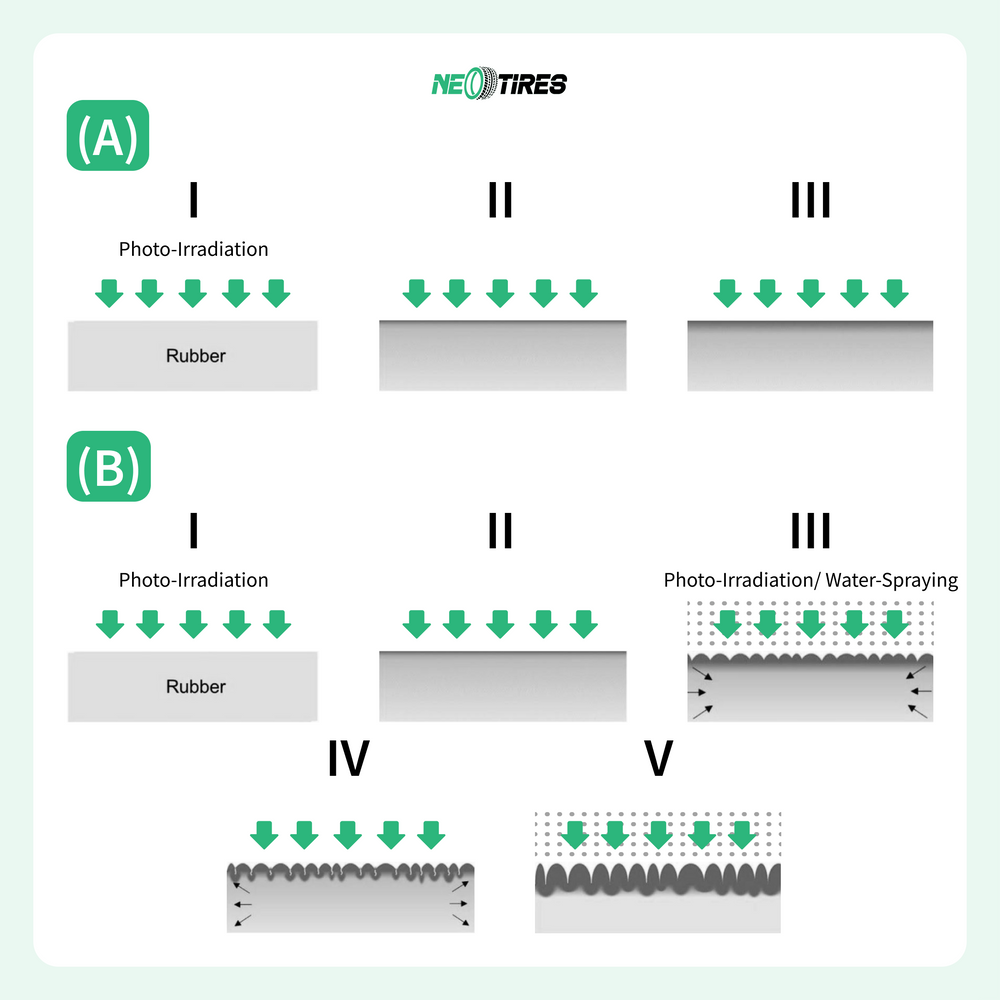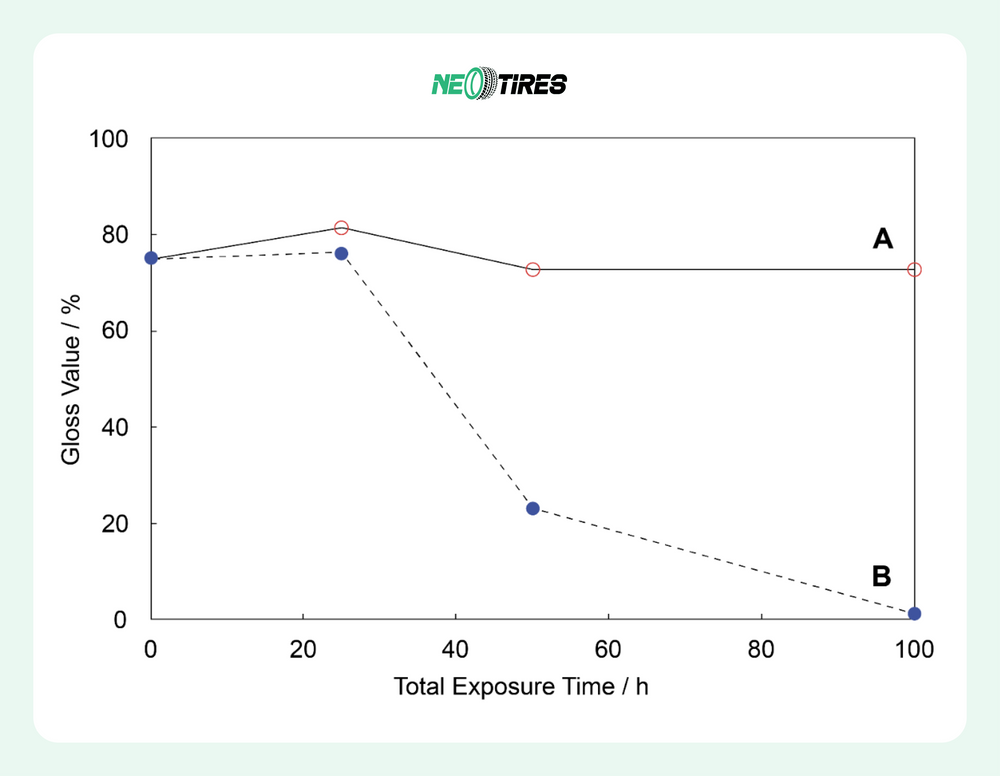Vulcanized rubber is flexible and stretchable, due to its crosslinked structure that is not contained in conventional polymers [1, 2]. However, it has the disadvantage of continuous degradation with long-term use. We all know that heat, especially during the summer months, can be detrimental to tire performance and lifespan [1, 2]. But a recent study [3] reveals a surprising fact: rain can accelerate the degradation process of tires.
The previously mentioned study [3] focused on styrene-butadiene rubber (SBR), the most common type of rubber used in tires [1]. Researchers subjected SBR samples to accelerated weathering tests under two conditions:
- Photo-irradiated: Exposed to UV light and heat, simulating sunlight.
- Photo-irradiated/water-sprayed: These are the same conditions as above, but with intermittent water spray.
The results revealed significant differences in the degradation process depending on the presence of water.
The Surprising Impact of Water Spray
While both conditions led to the breakdown of butadiene molecules in the rubber, the photo-irradiated/water-sprayed samples showed accelerated degradation compared to those only exposed to UV light and heat. This is due to the combination of temperature changes caused by the water spray [3].
Here's a breakdown of what happens:
- Cooling: When water is sprayed, the rubber surface cools down.
- Expansion: This cooling causes the rubber to shrink.
- Heating: When the water evaporates, the rubber heats up again.
- Contraction: This heating causes the rubber to expand.
In simple terms, both UV light and water damage the tire's surface, making it hard and brittle. However, the water spray causes the tire to expand and contract repeatedly, making the surface more prone to cracking and further degrading the tire from the inside out. This explains why tires exposed to both heat and rain degrade faster than tires exposed only to UV light. This continuous cycle of shrinking and expanding due to water spray creates microscopic cracks, known as crazes, that weaken the tire's structure over time. Here's a breakdown of the steps (Figure 1):
I: The UV light breaks down the butadiene molecules in the tire's surface layer.
II: This breakdown hardens the surface, making it less flexible.
III: The hardening process continues, with a layer of degraded rubber forming on the surface. This layer blocks sunlight and oxygen from reaching the tire's interior.
IV: When water is sprayed, the tire cools and shrinks, but the hardened surface cannot contract as much, causing it to crack.
V: The water evaporates, causing the tire to heat up and expand, but the cracks (crazes) prevent the surface from returning to its original shape, leading to further damage and a cycle of degradation.
Crazes: The Silent Threat
These crazes are a significant concern for tire performance. They compromise the structural integrity of the tire, leading to:
- Decreased gloss: The tire surface becomes rougher, leading to a loss of shine. As seen in Figure 2, the tires exposed only to UV light (A) maintained their shine throughout the test. However, the tires exposed to both UV light and water (B) lost their shine significantly after 50 hours of exposure, indicating a faster degradation process.
- Reduced hardness: The tire becomes softer and less able to withstand stress.
- Increased surface roughness: The crazes become more pronounced and the tire's surface becomes uneven. Under a powerful microscope (SEM – scattered electron microscopy), the tires exposed only to UV light looked similar to brand-new tires. However, tires exposed to both UV light and water showed tiny holes (voids) after 25 hours, and then developed fine cracks (crazes) after 50 hours, which grew larger over time. These cracks are linked to the rapid decrease in gloss seen after 50 hours of exposure (Figure 3).
- Premature aging: The tire deteriorates faster and becomes more susceptible to damage and wear. Learn more about the relationship between tire oxidation and aging.

Why Does This Matter to You?
This study highlights that the presence of rain can significantly impact the lifespan of your tires. While we often focus on protecting our tires from extreme heat, it is crucial to understand the role of water in the degradation process.
What Can You Do?
- Regular tire inspections: Regularly check your tires for any signs of crazing or damage.
- Proper maintenance: Follow recommended tire pressure and rotation schedules.
- Avoid excessive exposure: Limit the amount of time your tires are exposed to harsh weather conditions.
Understanding the impact of both heat and rain on tire degradation can help you make informed decisions to keep your tires in optimal condition and ensure a safe and enjoyable driving experience.
References:
[1]. Sommer, J. G. (2009). Engineered rubber products. Munich: Hanser Publishers.
[2]. McKeen, L. W. (2013). The effect of UV light and weather on plastics and elastomers (3rd ed.). Elsevier.
[3]. Kano, M., Ohtake, Y., Yamanobe, T., & Uehara, H. (2020). Effect of water spray on the degradation of styrene-butadiene-rubber during accelerated weathering tests. Polymer Degradation and Stability, 182, 109379. https://doi.org/10.1016/j.polymdegradstab.2020.109379







